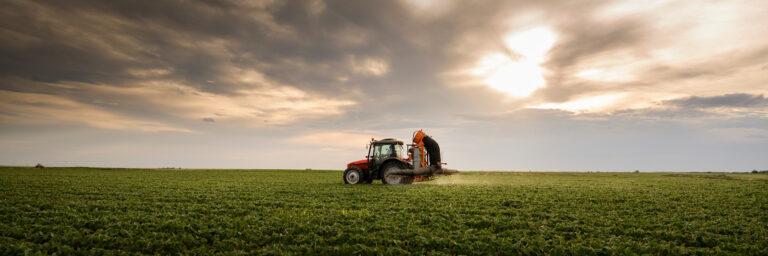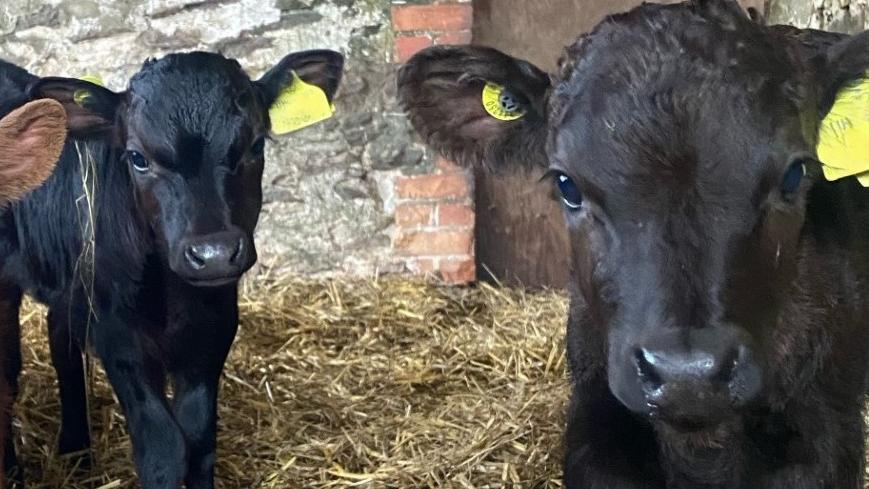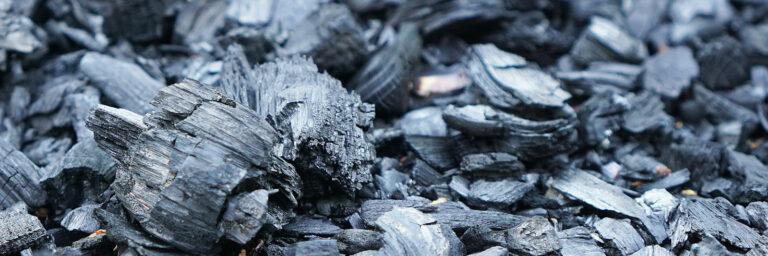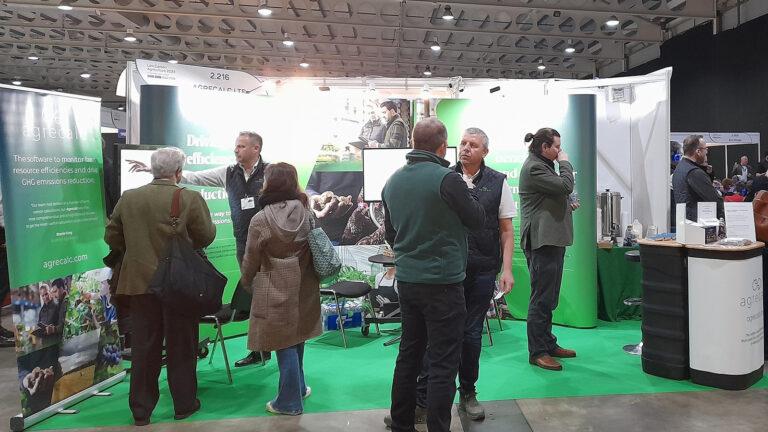
April Business Update: SRUC
After two years of operation as a Limited Company, Agrecalc became part of Scotland’s Rural College (SRUC) as of 1 April 2025.
PRISM2030 farmer appears to have found the final straw in his quest to reduce carbon emissions on his organic farm. A forward-thinking Japanese process called bokashi manure management helps the manure retain its nutrient energy.
Moreover, reducing the volume of straw used and working on soil health are the two main improvements farmer John Ker made after agreeing to carbon calculation.
As an organic farmer, John has an ingrained interest in farming in harmony with the environment so had no hesitation in signing up for the Programme for the Improvement in Sustainability of (red) Meat (PRISM 2030) initiative, which was launched in November 2022 by ABP UK, one of Europe’s leading privately owned food processors.
Agrecalc’s consultancy partners, The Andersons Centre, used our technology to calculate and – together with Professor Jude Capper from Harper Adams University – give suggestions to improve the carbon footprint and business efficiency at 47/ha Kittisford Barton Farm, near Wellington in Somerset.
John, aged 36, grew up on the family farm but left school to take up a place at military college. This led to instructing outdoor pursuits in France, followed by a sports science degree and finally back home to his farming roots.
“My attitude was very much let’s try this carbon calculation and see what bits we can learn,” explains John. “On a personal level I feel farmers – and more specifically cows – get an undeserved bad press when it comes to emissions.”
The farm has been organic since 2000 and runs a simple system of buying in around 50 weaned Angus-cross calves each year from a local dairy herd. These stay on milk for three or four months before being finished for ABP at 24 months.
“We don’t push them on concentrates, preferring a grass-fed system,” says John, who farms with his parents, wife and young family. “One of the study’s recommendations was to get them finished earlier. My belief is the jury’s still out on this, as with organic concentrate £700 a ton would the costs of getting them away at 19 or 20 months really add up? It is a fascinating debate that I agree needs to be had.”
John also runs a herd of 30 pedigree Dexters on the family’s holding, with some offspring retained for breeding and others being used in a beef box scheme. Other enterprises on the farm include luxury holiday accommodation.
“We’re now keeping more of the cattle out for longer and this, in turn, reduces the amount of straw used,” recalls John, who says the Agrecalc calculations showed he was using more than the average bales of straw for beef cattle.
“I used to house the cattle from early October until April, but since the Agrecalc study some didn’t come inside until January and another group were out by February. Slightly adjusting the numbers of cattle kept over winter means there is more grass for spring, as well as improving soil structure with less trampling of the fields thanks to rotational grazing.”
With its organic status, the farm does not use any artificial fertilisers or herbicide sprays and no wormers or antibiotics unless the latter is needed from an animal welfare point of view.

“Having access to the Agrecalc calculator was a good reminder of the importance of finding time in our busy lives to sit down and have a think; to have a look at the inputs and how much everything is really costing. It gave me the incentive to stop and critique our system and review it where needed. It’s certainly something I would consider having done again, so I can compare these results with another set in the future.”
John Ker, Organic farmer
Bale grazing, putting bales of hay out into the fields during winter to stretch the grazing, has been a recommendation of the PRISM scheme that has worked well. Pasture improvements are ongoing, with high clover content and chicory, known for its natural de-worming properties, included in planting. John is also trying to keep grass swards high, with rotational grazing also having a part to play in the ongoing battle to beat the life cycle of parasites.
Finally, John enjoyed showing the carbon calculation team his forward-thinking manure management system. Once a week he sprays a mixture containing effective microbes onto the cattle’s straw bedding.
“The age-old way of dealing with farmyard manure is to cart it away in a trailer and dump it in a field for anything up to three years, losing all its nutrients and energy,” says John.
“Instead, I mix up these microbes with water and using a traditional knapsack sprayer, mist the straw weekly with the solution, which is a brown molasses-type liquid. These microbes ferment, creating an anaerobic environment. I put a silage sheet over it at the end of winter and within eight weeks it has gone really soft and can be spread on the land having retained all its nutrients. It is a Japanese process called bokashi*.”
John has found plus points to include the reduction of the smell of ammonia in the sheds, which has improved cattle health. The bedding remains dryer, saving the amount of straw needed and giving none of the run-off or gas emissions of traditional muck heaps. He has also found it gets mixed into the soil structure quicker.
“Having access to the Agrecalc calculator was a good reminder of the importance of finding time in our busy lives to sit down and have a think; to have a look at the inputs and how much everything is really costing. It gave me the incentive to stop and critique our system and review it where needed. It’s certainly something I would consider having done again, so I can compare these results with another set in the future.”
The farm’s Agrecalc report, delivered by Michael Haverty, Partner and Senior Research Consultant with The Andersons Centre, considered all aspects of the business and how it is managed, generating calculations that then allowed practical recommendations for improvement, to be made.
Consultant recommendations included:
*Bokashi composting is said to provide optimal nutrition for soil life, by increasing organic matter, suppressing disease, is environmentally friendly with no CO2 or NH3 emissions. Users can recycle their own waste streams, saving on disposal costs in organic material, and can be made on site.

After two years of operation as a Limited Company, Agrecalc became part of Scotland’s Rural College (SRUC) as of 1 April 2025.

Biochar is a carbon-rich material produced by pyrolysing biomass, which offers a variety of potential agronomic benefits. In this guest article, Black Bull Biochar discusses how these effects work together to bolster productivity, sustainability, and resilience in farming.

The Agrecalc team is looking forward to welcoming you at our stand (2.844) at this year’s Low Carbon Agriculture Show, taking place on March 5 and 6, at NAEC Stoneleigh near Kenilworth.